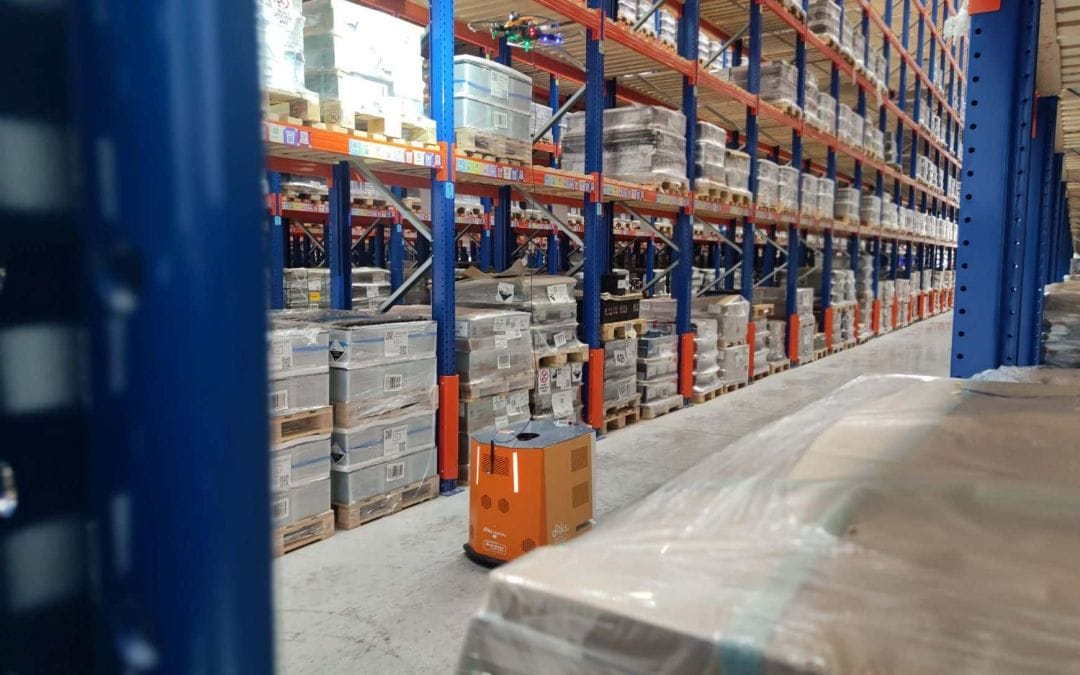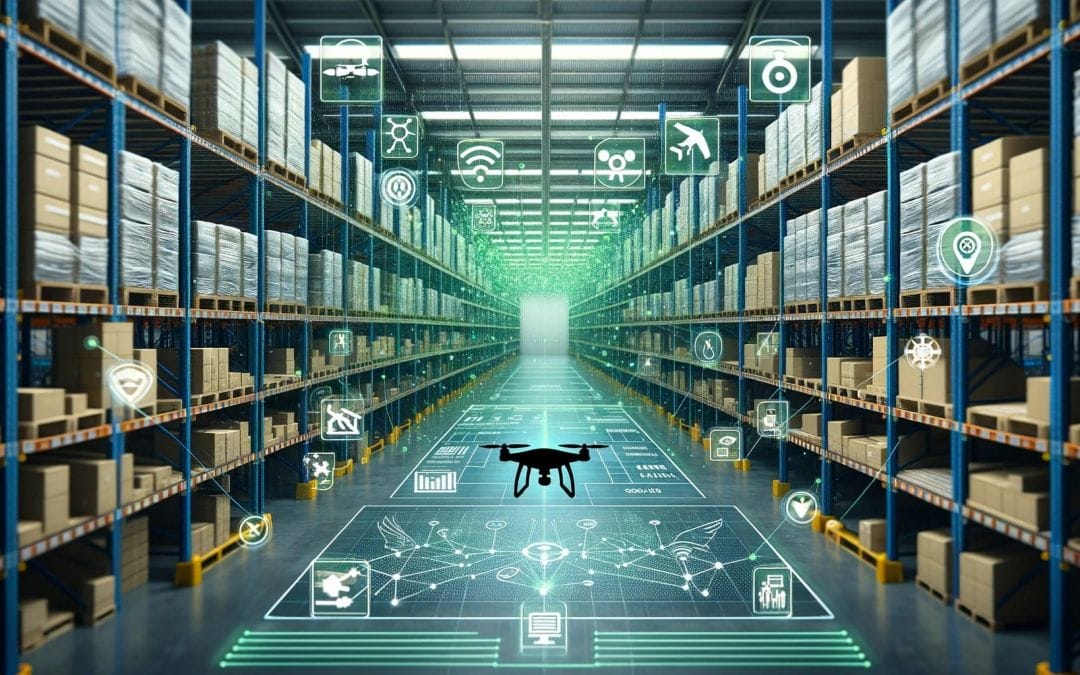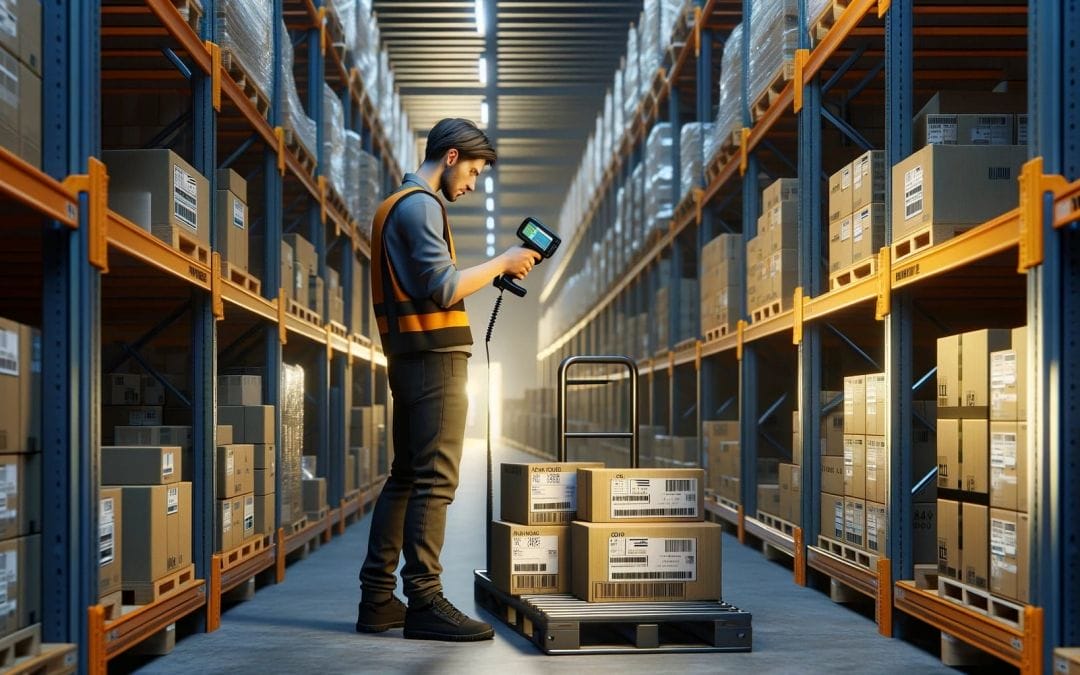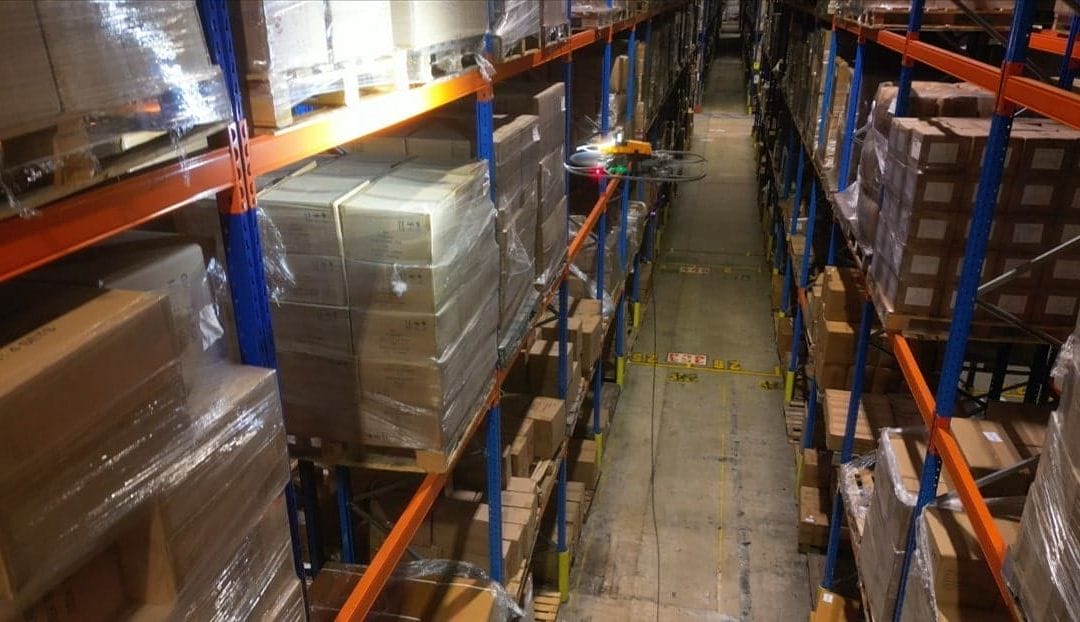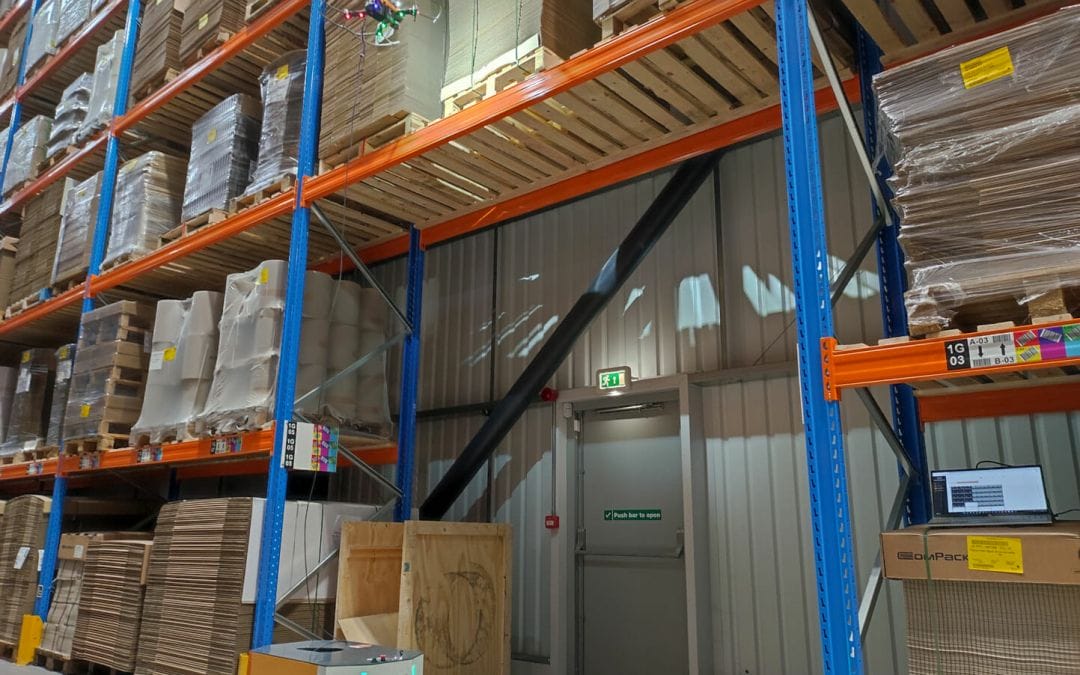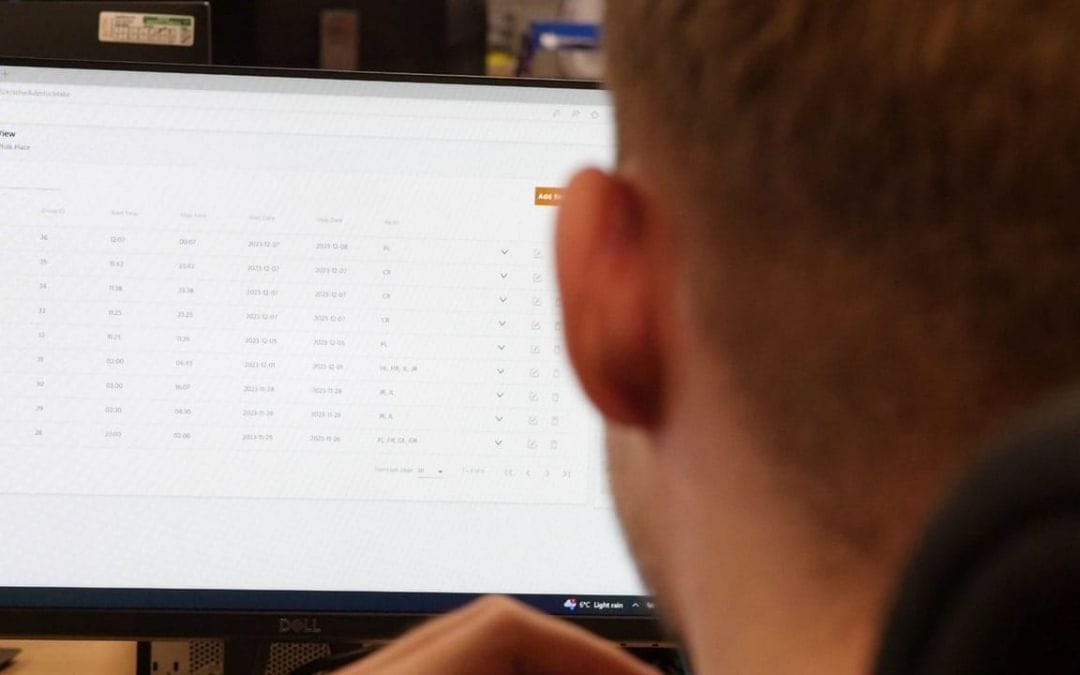7 compelling arguments for drone-based inventory control
We know inventory counts can provide a number of challenges, but what if drones could do the task for you? Automating your warehouse inventory counts can help save time and money, increase accuracy and enhance safety, but if thats not enough, here are 7 compelling arguments…

There are many moving parts to running a highly efficient, productive and profitable logistics operation. Getting these moving parts to work in harmony involves processes, and lots of them! Some are relatively straightforward, but others can be a complete minefield.
One thing that’s common, though, is that any logistics operation will fall over if these processes are not maintained rigorously! The downside of all of this, of course, is that most of these processes typically involve significant manual resource (or to put it another way, a requirement for staff to conduct business-critical tasks, manually). For this reason, automation is never far from the minds of any project manager or innovation specialist worth their salt.
In this post, we aim to uncover the role that drone technology plays with inventory automation, and look at some of the most compelling arguments for adopting this highly innovative technology.
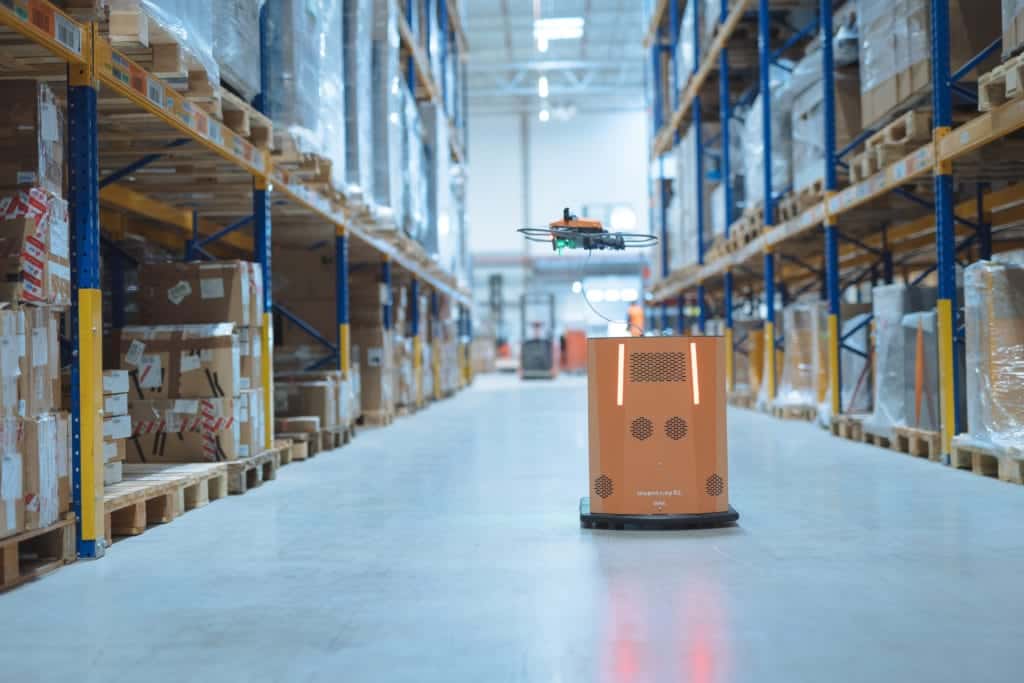
Inventory drones are best suited to facilities that suffer either from inaccurate inventory records, or who find staying on top of inventory with regular manual counts a significant cost implication.
The Benefits of Drones in Logistics
1. Reducing costly human errors
It’s a fact of life that humans make mistakes when conducting manual tasks. This is especially true when those tasks are laborious and monotonous – and a good example of such a task is inventory counting.
There are a number of factors that can negatively influence human performance, such as:
- Stress – typically categorised by: environmental, psychological, reactive and organisational
- Fatigue
- Physical wellbeing
- Use of alcohol, drugs and medication
Clearly, these factors are not felt by machines like drones, so their use in inventory control can all but eliminate stock errors.
2. Gain access to inventory data in real-time
The well-known adage of “you can’t improve what you don’t measure” is particularly pertinent here. After all, it’s simply impossible to optimise any process if you don’t have a robust understanding of the current situation. In the case of logistics, that means knowing what’s on the shelves right now and critically, what needs to be on those same shelves in the future. If one doesn’t reliably know the former, there’s no chance of optimising the latter.
Purpose-built warehouse drone solutions, such as inventAIRy XL, have the capability to carry out fully autonomous inventory control (no human involvement) as often as is required to ensure that the WMS or ERP is truly reflective of the real-world situation.
3. More productive utilisation of staff
It’s a given that automation relieves humans of the tasks they once did manually. That’s not to say that logistics managers suddenly find themselves with the unenviable job of making staff redundant. Instead, it should be seen as an opportunity to reutilise that labour capacity on more productive duties that can’t be so easily automated.
Fully autonomous, drone-based inventory counts is the perfect example of a tool that facilitates better overall productivity with the same (or fewer) staff.
4. Labour shortage mitigation
In the wake of Brexit, the inflow of skilled labour from EU countries has declined rapidly. This continues to deal significant challenges to various departments within the logistics sector – not just with the execution of its day-to-day work, but also with the subsequent rising costs of the labour market.
This is where an autonomous drone solution for inventory control can help. With its ability to operate completely autonomously, tasks like cycle and PI counts can continue without disruption.
5. Improved health & safety
Warehouses can be hazardous working environments. Working at height and in close proximity to forklifts is a way of life for most warehouse operatives. Inventory counts are probably the biggest contributor to this very real risk. But it doesn’t have to be that way!
Customised warehouse drones are able to replace the human-led data capture phase of every stocktake.
6. Better customer retention
In today’s world, customer expectation levels have never been higher. Needless to say, this puts the processes of logistics companies to the ultimate test; day in, day out. If these processes break, the result is quite simple: you end up with an unhappy customer, or worse still, a collection of unhappy customers!
As a business, you are not only focussed on retaining existing customers but also on attracting new ones! It is, therefore, understandable why logistics companies are constantly looking to innovate to maintain/gain their competitive advantage.
Imagine a scenario where, as a 3PL company, you can proactively commit to give your customers a daily report of their inventory. With autonomous cycle counts, that’s exactly what you can do.
7. Reduced environmental impact
Inventory optimisation can directly help reduce carbon emissions. Analysing inventory data to create better forecasts, managing the supply chain more efficiently (e.g. by ordering full truckloads or combining freights) as well as becoming more agile to react faster to the market are all ways that will help you to reduce your business’ carbon footprint. However, this requires an accurate grasp of inventory data.
This is where regular autonomous stocktakes with drones can really help. Check out our previous post for more information on this specific subject.
Conclusion
When inventories are carried out and managed manually, teams must walk around the warehouse, scanning and counting items. The process can be slow, labour-intensive, dangerous, expensive, and prone to inaccuracies.
Autonomous drones for inventory control, on the other hand, can increase inventory accuracy, while reducing labour costs and minimising health and safety risks amongst the workforce.
It also means that workers can continue with their daily duties, rather than being pulled away to carry out inventory-related tasks.


